Second-cut silage will be mowed on James and Owen Martin’s farm in south Armagh shortly. If weather conditions permit, the Martins will start cutting at the end of this week.
“It is starting to go to head and there is not an awful lot of volume to it. New grass is starting to come through, so we will just take the yield hit to try and keep the quality up,” James said.
Second-cut has been growing for five weeks and the lack of rain throughout the period has affected growth. Until the end of last week, there had been no significant rain on the Martin farm.
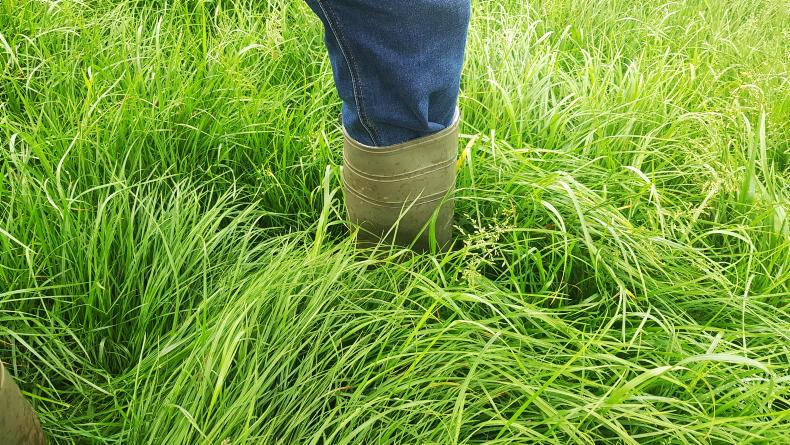
Second-cut grass is starting to shoot and will be mowed shortly.
“Any showers that had fallen since first-cut were light and short. It was really just enough to wet the ground,” James explained.
With the help of some extended family and neighbours, the Martins do all their own silage and slurry work. First-cut went in on 12 May in ideal weather conditions.
The Martins were very happy with quality, but the bulk was described as average at best. Even though silage yields have been on the light side so far this year, James has no major concerns about fodder reserves for the incoming winter.
The Martins run a fully housed, all year-round calving system, so silage is a fundamental part of their system.
They generally have at least six months silage ahead of themselves at any one time and milking cows are currently getting last year’s second-cut.
“We should be OK for fodder. We had a brilliant year in 2019, so we have plenty to tide us over. We should also hopefully get a good crop in third-cut and we will make some fourth-cut too,” James said.
Calving is quiet on the Martin farm at present, with the most recent arrivals being beef-sired calves from older cows.
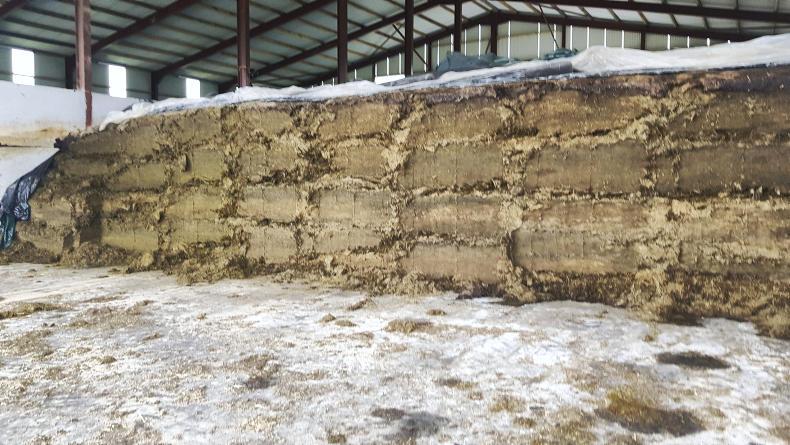
Milking cows are currently getting last year's second-cut silage.
“Heifers are due to start calving in the next month or six weeks. Then there will be cows starting after that. We are drying off a good few cows at the minute,” James said.
There are 140 cows going through the parlour at present. They are averaging 31l from 11 kilos of concentrates.
The milk herd is split into two groups, with high yielders getting nine kilos of blend through the diet feeder and low yielders on five kilos.
In the parlour, the low yielding group gets an additional one kilo of concentrate. The high yielders are on an EID tag feed-to-yield system, which has a maximum feed rate for parlour nuts of six kilos.
New reseed improves after rainfall
The Martins reseed a proportion of their farm every year, with minimum cultivation techniques.
Diploid varieties Drumbo and Kerry, as well as the tetraploids Nashota and Xenon, were used in a reseed at the end of April.
However, sward development was limited due to weather conditions initially being cold, and then the subsequent lack of rain reduced soil moisture levels.
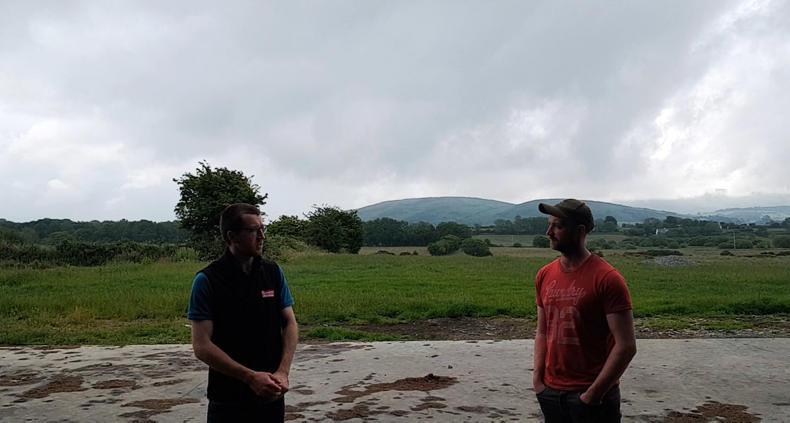
Watch the video online at www.farmersjournal.tv
Weeds, such as redshank and chickweed, have developed in the reseed and most of the grass seed was slow to germinate.
Dairylink Ireland adviser Aidan Cushnahan recommended delaying post-emergence spray until soil moisture levels increased and most of the grass plants grew to the three-leaf stage.
Rain over the weekend brought a significant improvement to the sward within a few days and James is aiming to apply spray shortly. The plan after that is to graze the sward with heifers to help encourage tillering.
Growth accelerates on Dairylink farms
Welcome rain has led to a significant increase in grass growth on Dairylink Ireland farms over the past week.
The change has been most dramatic in Co Down, where dry conditions were having the most severe effect.
Growth rates on Stephen Wallace’s farm in Seaforde have increased from 18kg DM/ha/day last week to 99kg DM/ha/day over the past seven days.
The difference has been less pronounced elsewhere, especially in the west, but growth rates have improved on all farms. Richard Marshall in Omagh recorded 118kg DM/ha/day, up from 47kg DM/ha/day last week.
The budget has also focused minds on getting maximum output from the milking platform, now that growth has taken off again
That said, a few farmers that had a light crop of first-cut silage and supressed growth for second-cut are starting to get concerned about winter feed reserves.
Fodder budgets have been calculated and additional silage has been bought in already on some farms.
The budget has also focused minds on getting maximum output from the milking platform, now that growth has taken off again.
The aim is to bale as much surplus grass as possible, to help replenish fodder stocks and to improve sward quality for subsequent grazing rounds.
For autumn-calving herds, another option to boost winter feed reserves is to close up more ground for third-cut silage, as grazing demand will drop off anyway as cows are dried off.
There has been a sharp increase in grass growth on Dairylink farms.Second cut silage will start within the next few days, weather permitting.Farmers are calculating
fodder budgets and will update them throughout the summer.Rain has helped improve spring reseeds on programme farms. Read more
Dairy management: a week of high growth expected
The Grass Week: rain on the way
Second-cut silage will be mowed on James and Owen Martin’s farm in south Armagh shortly. If weather conditions permit, the Martins will start cutting at the end of this week.
“It is starting to go to head and there is not an awful lot of volume to it. New grass is starting to come through, so we will just take the yield hit to try and keep the quality up,” James said.
Second-cut has been growing for five weeks and the lack of rain throughout the period has affected growth. Until the end of last week, there had been no significant rain on the Martin farm.

Second-cut grass is starting to shoot and will be mowed shortly.
“Any showers that had fallen since first-cut were light and short. It was really just enough to wet the ground,” James explained.
With the help of some extended family and neighbours, the Martins do all their own silage and slurry work. First-cut went in on 12 May in ideal weather conditions.
The Martins were very happy with quality, but the bulk was described as average at best. Even though silage yields have been on the light side so far this year, James has no major concerns about fodder reserves for the incoming winter.
The Martins run a fully housed, all year-round calving system, so silage is a fundamental part of their system.
They generally have at least six months silage ahead of themselves at any one time and milking cows are currently getting last year’s second-cut.
“We should be OK for fodder. We had a brilliant year in 2019, so we have plenty to tide us over. We should also hopefully get a good crop in third-cut and we will make some fourth-cut too,” James said.
Calving is quiet on the Martin farm at present, with the most recent arrivals being beef-sired calves from older cows.

Milking cows are currently getting last year's second-cut silage.
“Heifers are due to start calving in the next month or six weeks. Then there will be cows starting after that. We are drying off a good few cows at the minute,” James said.
There are 140 cows going through the parlour at present. They are averaging 31l from 11 kilos of concentrates.
The milk herd is split into two groups, with high yielders getting nine kilos of blend through the diet feeder and low yielders on five kilos.
In the parlour, the low yielding group gets an additional one kilo of concentrate. The high yielders are on an EID tag feed-to-yield system, which has a maximum feed rate for parlour nuts of six kilos.
New reseed improves after rainfall
The Martins reseed a proportion of their farm every year, with minimum cultivation techniques.
Diploid varieties Drumbo and Kerry, as well as the tetraploids Nashota and Xenon, were used in a reseed at the end of April.
However, sward development was limited due to weather conditions initially being cold, and then the subsequent lack of rain reduced soil moisture levels.

Watch the video online at www.farmersjournal.tv
Weeds, such as redshank and chickweed, have developed in the reseed and most of the grass seed was slow to germinate.
Dairylink Ireland adviser Aidan Cushnahan recommended delaying post-emergence spray until soil moisture levels increased and most of the grass plants grew to the three-leaf stage.
Rain over the weekend brought a significant improvement to the sward within a few days and James is aiming to apply spray shortly. The plan after that is to graze the sward with heifers to help encourage tillering.
Growth accelerates on Dairylink farms
Welcome rain has led to a significant increase in grass growth on Dairylink Ireland farms over the past week.
The change has been most dramatic in Co Down, where dry conditions were having the most severe effect.
Growth rates on Stephen Wallace’s farm in Seaforde have increased from 18kg DM/ha/day last week to 99kg DM/ha/day over the past seven days.
The difference has been less pronounced elsewhere, especially in the west, but growth rates have improved on all farms. Richard Marshall in Omagh recorded 118kg DM/ha/day, up from 47kg DM/ha/day last week.
The budget has also focused minds on getting maximum output from the milking platform, now that growth has taken off again
That said, a few farmers that had a light crop of first-cut silage and supressed growth for second-cut are starting to get concerned about winter feed reserves.
Fodder budgets have been calculated and additional silage has been bought in already on some farms.
The budget has also focused minds on getting maximum output from the milking platform, now that growth has taken off again.
The aim is to bale as much surplus grass as possible, to help replenish fodder stocks and to improve sward quality for subsequent grazing rounds.
For autumn-calving herds, another option to boost winter feed reserves is to close up more ground for third-cut silage, as grazing demand will drop off anyway as cows are dried off.
There has been a sharp increase in grass growth on Dairylink farms.Second cut silage will start within the next few days, weather permitting.Farmers are calculating
fodder budgets and will update them throughout the summer.Rain has helped improve spring reseeds on programme farms. Read more
Dairy management: a week of high growth expected
The Grass Week: rain on the way







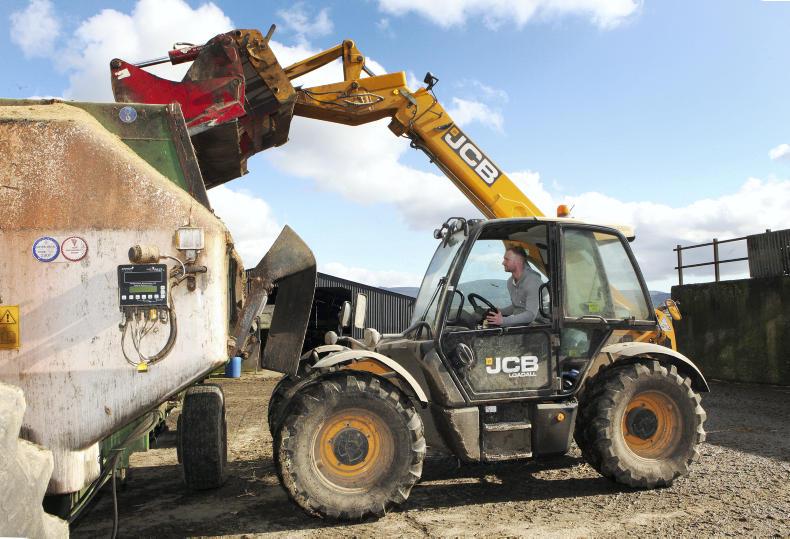
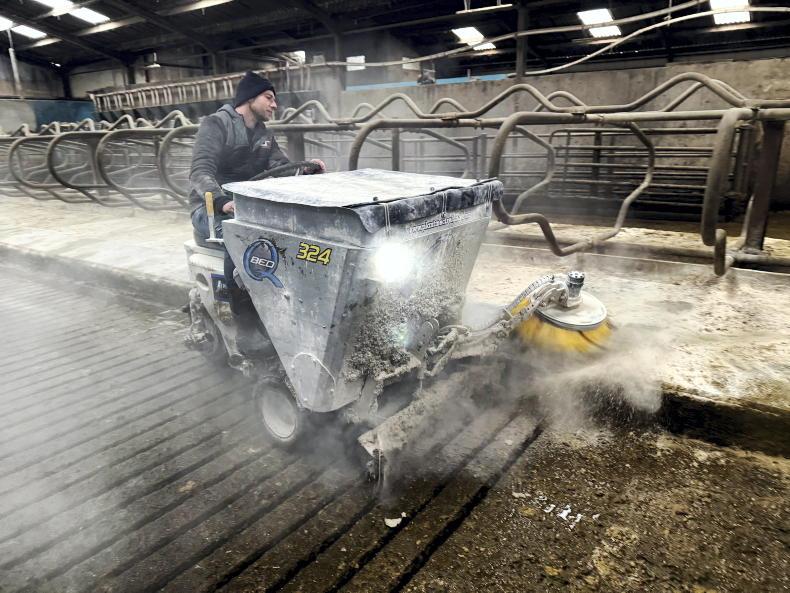
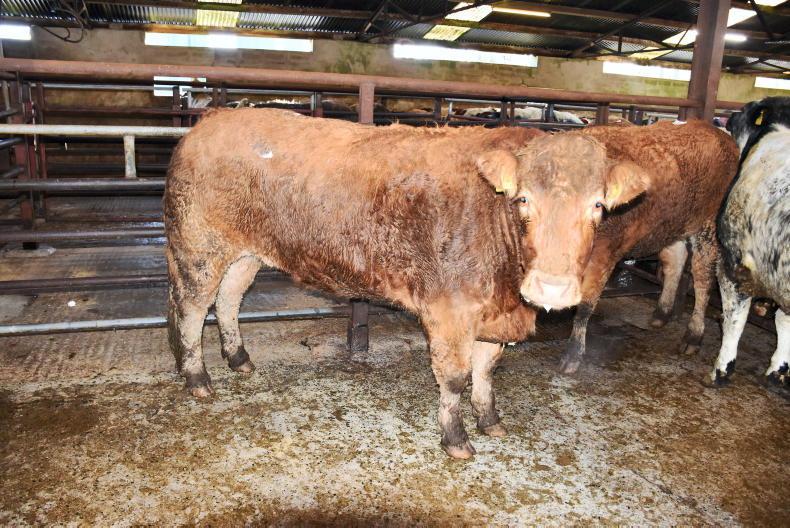

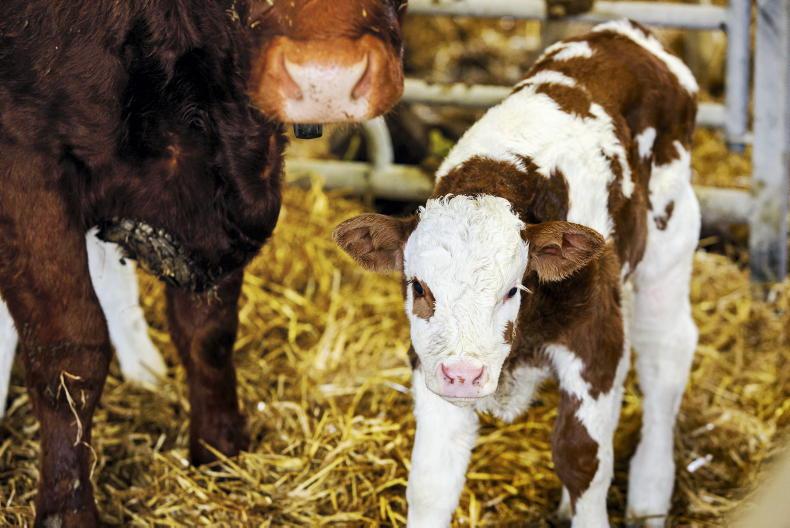
SHARING OPTIONS